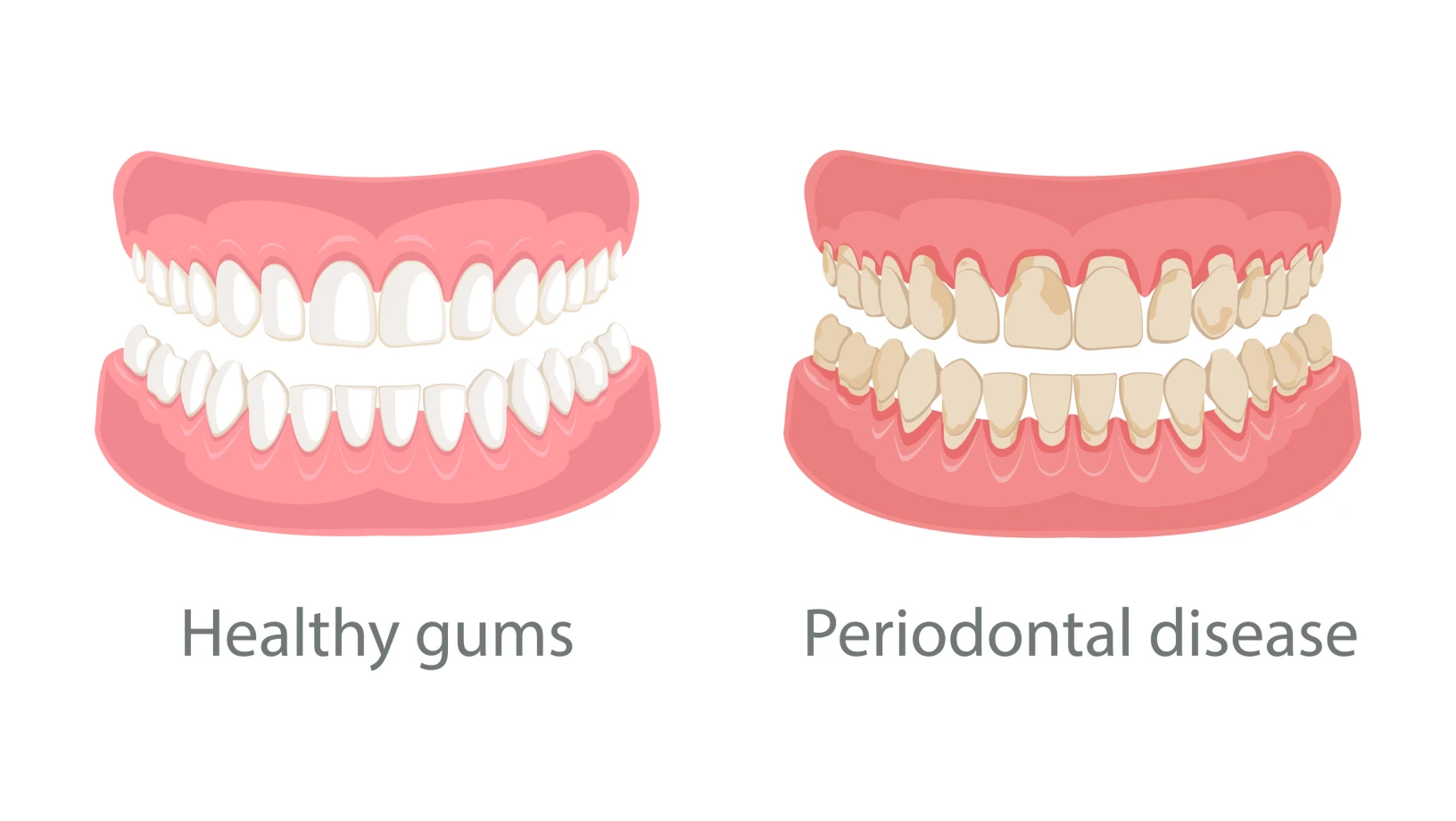Gum diseases
Gum Disease Symptoms
Gum disease is often silent, meaning symptoms may not appear until the advanced stages. However, warning signs of gum disease include the following:
- Red, swollen, or tender gums or other pain in your mouth;
- Bleeding while brushing, flossing, or eating hard food;
- Gums that are receding or pulling away from the teeth, causing the teeth to look longer than before;
- Loose or separating teeth;
- Persistent bad breath;
- A change in the way your teeth fit together when you bite.

Gingivitis
Gingivitis – is the mildest form of periodontal disease. It causes the gums to become red, swollen, and bleed easily. There is usually little or no discomfort at this stage. Luckily, gingivitis is reversible with professional treatment and good at-home oral care.
Periodontitis
Periodontitis – untreated gingivitis can advance to periodontitis. With time, plaque can spread and grow below the gum line. Toxins produced by the bacteria irritate the gums and stimulate a chronic inflammatory response in which the body essentially turns on itself, and the tissues and bone that support the teeth are broken down and destroyed.
Gums separate from the teeth, forming pockets between the teeth and gums that can become infected. As the disease progresses, the pockets deepen and more gum tissue and bone are destroyed. Eventually, teeth can become loose and may fall out or need to be removed.
In addition, bacteria can enter the bloodstream and create complications in some medically-compromised patients or when the immune system is weak.
Treatment of periodontitis
First-line treatment usually includes :
- Oral hygiene instructions and disease prevention;
- Deep cleaning or scaling and root- planing of the contaminated tooth root surfaces below the gums;
- Sub-gingival detox with chemical pocket irrigation;
- Local antiseptic medications;
- Reevaluation and follow-up visits.
More advanced diseases may require :
- Bacterial culturing;
- DNA testing;
- Antibiotics prescribed to take by mouth;
- Occlusal/bite adjustment;
- Biteguard;
- Corrective or regenerative surgical procedures (bone grafting procedures).
Also learn about : Prosthesis rehabilitation